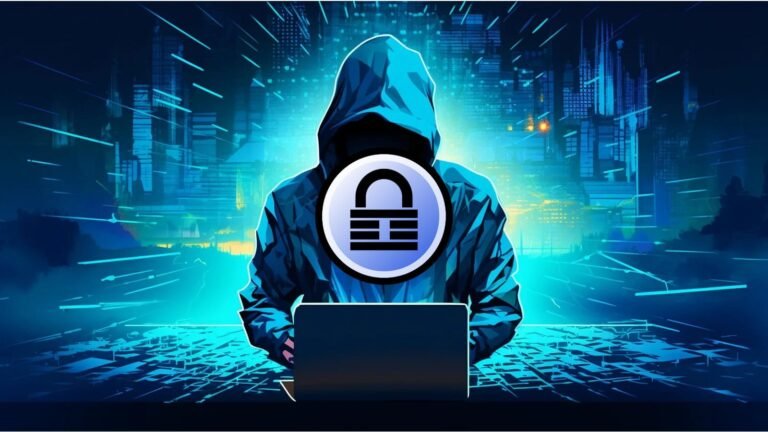Fast Facts
-
Trojanized KeePass Distribution: Threat actors have been distributing infected KeePass installers for over eight months, enabling credential theft and ransomware deployment via Cobalt Strike beacons.
-
Modified Source Code: The trojanized version, named KeeLoader, retains all KeePass functionality but secretly installs Cobalt Strike beacons and exports password databases in cleartext for theft.
-
Linked to Black Basta: The Cobalt Strike watermark used in this campaign indicates a connection to an Initial Access Broker associated with Black Basta ransomware, highlighting ongoing threats in cybercrime.
- Legitimate Certificates: Multiple variants of KeeLoader are signed with legitimate certificates and spread through typo-squatting domains, emphasizing the need for users to download software only from verified sources to avoid malware.
What’s the Problem?
Over the past eight months, threat actors have executed a sophisticated campaign exploiting a trojanized version of the KeePass password manager, primarily to deploy Cobalt Strike beacons and facilitate ransomware attacks. Researchers from WithSecure stumbled upon this scheme while investigating a ransomware incident affecting VMware ESXi servers. They discovered that this operation began with malicious KeePass installers promoted through deceptive Bing advertisements, leading victims to counterfeit software websites. The attackers ingeniously altered the open-source code of KeePass to create a trojanized variant, known as KeeLoader. Besides mimicking all standard password management functionalities, KeeLoader stealthily installs Cobalt Strike beacons and exports sensitive passwords in cleartext, ultimately compromising user credentials for future exploitation.
The malicious campaign has been intricately designed, featuring multiple variants of KeeLoader stealthily signed with genuine certificates and disseminated via typo-squatting domains. Notably, the domain keeppaswrd[.]com remains operational, continually distributing the trojanized software. The architecture supporting this initiative includes a web of subdomains impersonating reputable companies aimed at disseminating various malware versions or pilfering credentials. WithSecure attributes this malevolent activity to the threat actor group UNC4696, historically associated with campaigns linked to the BlackCat/ALPHV ransomware. Experts strongly advise users to download sensitive software exclusively from verified sources, cautioning against trusting even seemingly legitimate advertisements that can lead to nefarious sites.
Risks Involved
The ongoing dissemination of trojanized KeePass password manager versions poses a multifaceted risk landscape for businesses, users, and organizations alike, materializing through compromised data integrity and severe operational disruptions. As adversaries embed Cobalt Strike beacons within altered versions of a widely used open-source tool, they not only exfiltrate vital credentials but also lay the groundwork for potential ransomware deployment on an expansive scale, effectively leveraging the trust associated with KeePass. This threat could catalyze a cascading failure among interconnected entities; organizations that fail to secure their networks against such infiltrations may face crippling ransomware operations, resulting in substantial financial losses, reputational degradation, and regulatory penalties, while users could see their sensitive information exploited for identity theft or fraud. Furthermore, the insidious nature of these attacks, which masquerade as legitimate software through typo-squatting domains and phishing schemes, complicates detection and mitigation efforts, positioning even vigilant entities at risk of being unwittingly ensnared in an exploitation chain that could severely impact their operational viability and stakeholder trust.
Possible Next Steps
In the realm of cybersecurity, the need for timely remediation cannot be overstated, particularly when it pertains to vulnerabilities exploited by malicious actors, such as in the case of a compromised KeePass password manager leading to ESXi ransomware attacks.
Mitigation Steps
- Immediate Updates: Patch KeePass and any associated plugins.
- Incident Response: Activate the incident response plan to contain and address the breach.
- System Audits: Conduct thorough audits of affected systems to identify the extent of the compromise.
- User Training: Reinforce training on secure password management and recognizing phishing attempts.
- Enhanced Monitoring: Implement advanced monitoring for unusual activity, particularly on ESXi servers.
- Isolation: Isolate affected systems to prevent further spread of malware.
NIST CSF Guidance
The NIST Cybersecurity Framework (CSF) emphasizes proactive measures to identify and mitigate vulnerabilities, reinforcing the importance of swift action to contain threats. For detailed guidance, refer to NIST Special Publication (SP) 800-53, which outlines security and privacy controls for federal information systems and organizations.
Stay Ahead in Cybersecurity
Discover cutting-edge developments in Emerging Tech and industry Insights.
Access world-class cyber research and guidance from IEEE.
Disclaimer: The information provided may not always be accurate or up to date. Please do your own research, as the cybersecurity landscape evolves rapidly. Intended for secondary references purposes only.
Cyberattacks-V1

